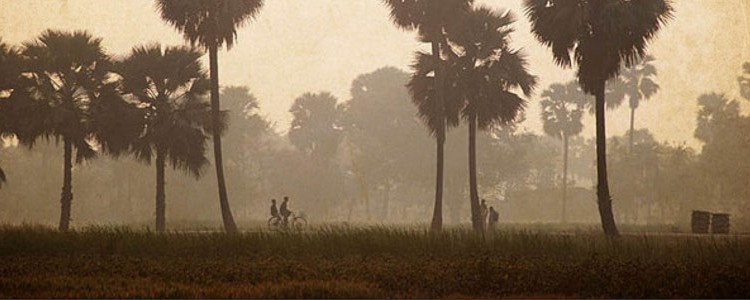Valmik Thapar, whose new book will be out on December 3, talks about how he got involved with the big cat.
Valmik Thapar has spent several decades serving the wild tigers of India. During this time, he has written more than 20 books and made or presented nearly a dozen films for the BBC and several other television networks on the tiger and Indian flora and fauna. He has also established the Ranthambhore Foundation, a non-governmental organisation dedicated to conserving wildlife. Despite having served on government panels and committees relating to nature conservation, he is today a fierce critic of government policy and continues to campaign and fight for new ways to save wild tigers and nature in India. This, he feels, requires partnerships with civil society in villages, towns and cities and a change in the mindset of governments. His latest book, Tiger Fire, brings together the best non-fiction writing, photography and art on the Indian tiger and is also the first time he writes on the tiger from a historical perspective. Excerpts from an interview:
How did you fall in love with tigers?
That is not easily explained, as the power of that emotion is beyond words. In 1976, I was probably open to such an experience but could never have imagined that my love for the tiger would have continued over my lifetime. Basically watching tigers, fighting for them, and looking at their history fills up my senses like nothing else… it has a power over me. This book has been a labour of love and just over three years in the making.
Tiger Fire details your experience in the Ranthambore Park. What unusual facts about tigers have you discovered in the many years of observing them?
In nearly 38 years of a life spent with tigers, I believe that the tigers of Ranthambore rewrote their natural history for the world to read, see and record. The first records of kin links among tigers were established here as were the first records of the male tiger in the role of a father and looking after cubs. This has also been established by Kim Sullivan’s recording of the baby sitter in Bandhavgarh and, more recently, Balendu Singh’s record of the male tiger bringing up cubs after the tigress died. Earlier most believed that the male killed the cubs. Ranthambore also gave us the first pictures of tigers killing in water, fighting crocodiles, eating pythons and porcupines, of a bear attacking a tiger, of the secret life of mother and cubs in the first six months of the cubs’ existence…
Towards the end of Tiger Fire, you sound disappointed by the government’s efforts made to save the tiger. What are the current initiatives (nationally and globally) to help save the tiger?
So far as current initiatives are concerned, I find them pathetic and encouraging of lip service rather than of field action. I advocate that the bureaucracies of the world — especially in India where 50 per cent of the world’s population of tigers live — should share power and decision making with committed people in villages, towns, and cities, with scientists, NGOs and conservationists.
In Africa, countries like Kenya, South Africa and Botswana allow all kinds of models from local people managing the conserved area to resort hotels managing it to partnerships between resorts, locals and the government. As a result, large and new areas have been added to wildlifescapes. In the Masai Mara, the locals get more than $100 million a year from revenues generated from tourism. In some areas, only locals manage both the area and tourism.
In India, the government takes on this role and it is least talented. We need to reform our levels of governance, change our rules and accommodate the young and the talented in the effort to save the tiger.We need a landscape approach with innovative tourism models. (Landscape means all categories of land: government, private, revenue and includes local people who may choose to live within it.) Our government must also partner with locals in villages to create a mindset change if the tiger is to survive.
In saving the tiger, what are the other animals that are also being saved from extinction?
With the tiger, you save leopards, bears, rhinos and elephants and all the deer and grass eaters right down to the birds and insects. If you fail, it strikes them all. There should be special schemes for snow leopards, wolves, brown bears, sharks, whales… all of which represent their ecosystems. This requires immense political will and action.
The section “Tiger in Time” brings together the finest writing on the tiger by a variety of writers from the 16th to the early 20th centuries. But most are foreigners. Are there no accounts in Indian languages?
I could not find any with the kind of detail that the foreign travellers brought to the table. May be from the 16th to the 19th centuries, India’s forests were so thick and inaccessible that, till the British entered to plunder them, there were written records by locals who lived outside. It was the tribals who lived in the forests and I could not find their written narratives. I think there were two worlds in those times — the tame one outside the forest where the kings and emperors ruled and the wild forest where the tribals ruled. Very few ventured into each other’s worlds till the British came in. There is a lot of visual material on paper and stone and a rich folklore. I have given a short summary of it in the section “The Cult of the Tiger”. A book of the same name and The Tiger: Soul of India, both published earlier by Oxford University Press, also deal with that aspect.
After the Ranthambore National Park was created, it meant that villagers — whose ancestors had for centuries lived within the environs of the Park — had to lose their homes and all access to wood, water and traditional farming lands. An initiative to support these villagers was taken when the Ranthambore Foundation was created with the objective of acting as a catalyst in resettling the displaced communities. The Ranthambore Foundation was created to help resettle the villagers displaced when the Ranthambore National Park was created. Presumably this model helped the people to look for alternate sources of income and livelihood and thus help conserve the natural habitat of the tiger. Do you think such a model has been successful? Would you advocate it for other sanctuaries?
Personally, I see the model as a failure because it did not do enough. In the 1990s, we had a rigid and uninterested forest bureaucracy who did not know how to partner and hold hands. Many believed that Ranthambore would have been in a mess without the creation of the foundation. There should be site-specific models in every tiger forest but the forest bureaucracy has to change their mindset and start working with locals first.
Excerpt from Tiger Fire —
“The Secret Life of the Tiger”
Strange as it may seem, it was on my last night that I had the encounter I always longed for. After dinner that night, I slipped into the jeep with the two trackers, Laddu and Badyaya, and the driver, Prahlad Singh. … The sky was pitch black with a brilliant array of stars. Our first job was to check two live baits that had been put out to attract the tiger …. The first bait that we went to check was tied to a large banyan tree at Singh Dwar. It had been killed. My heart missed a beat, but I could see nothing around the dead animal. As I flashed my torch around, I spotted a leopard curled up in the banyan tree watching the carcass.
Other than the crickets playing their orchestra, there were no other sounds. Suddenly, the booming alarm call of a sambar deer rent the air. I knew instinctively that a tiger had killed and the sound of our jeep had forced it to flee. … I waited for a while but the tiger was not coming. Our presence discouraged it. I did not realize it then but it would be years before the Ranthambhore tigers would lose their fear of man.
I quickly drove off to the second bait. Gone. Not a sign of it anywhere. I tried to search the area thoroughly but an old ruined wall hampered my visibility. I was sure the tiger feasted behind it. I was desperate to see it and the only person I could think of who might help was Fateh Singh Rathore. I raced out of the park to Sawai Madhopur where he lived. It was nearly 11 p.m. when I arrived at his house. On banging on the door, I found Fateh a little groggy but awake. When I explained the situation to him, I caught a glint in his eyes. He picked up his Stetson hat and jacket and we raced back into the park. With Fateh at the wheel, we reached the old wall at the edge of the lake close to midnight. He drove all around the wall, cramming the jeep into every crevice and corner. We directed our searchlights into every conceivable place we could think of. I was sure that the elusive tiger of Ranthambhore would have fled the scene because of all the pandemonium.
As I had suspected, we found nothing, but as Fateh reversed I saw the rear wheels of the jeep entering the water and soon the back of the vehicle was in danger of being submerged. I shouted to Fateh that we would soon be afloat and all he said was to keep the torch trained on the wall. And that is how I saw my first tiger in Ranthambhore— from a floating jeep while I flashed the searchlight around. There was a sudden sharp cough and snarl. Framed in front of me and watching the commotion with its huge head above the wall was the tiger. …
Excerpted with permission from Aleph Book Company
Tiger Fire; Valmik Thapar, Aleph Book Company, Rs.2995.
 The closer he came to those caves, the more he began to falter. He knew that something took place in the dark, a sexual attack across racial lines. The caves held that kind of power. But it wasn’t simply a question of the action; it was what the action arose from — what it meant. The problem was fundamental. No matter how he tried it, the words sat on top of the deed; they had no soil and no roots. There was something wrong with how he had imagined it, something essentially dishonest and out of balance, and as his narrative crept toward the threshold, the rock refused to open for him. ( p.142)
The closer he came to those caves, the more he began to falter. He knew that something took place in the dark, a sexual attack across racial lines. The caves held that kind of power. But it wasn’t simply a question of the action; it was what the action arose from — what it meant. The problem was fundamental. No matter how he tried it, the words sat on top of the deed; they had no soil and no roots. There was something wrong with how he had imagined it, something essentially dishonest and out of balance, and as his narrative crept toward the threshold, the rock refused to open for him. ( p.142)



















